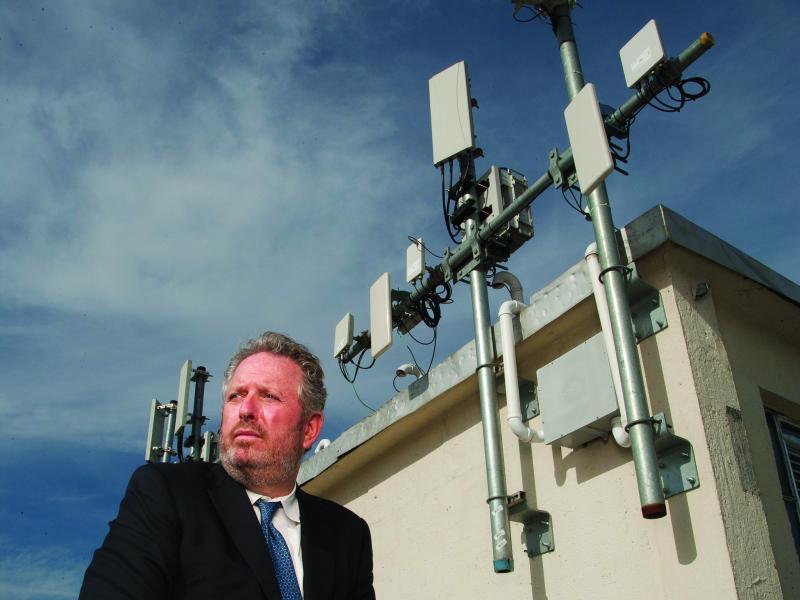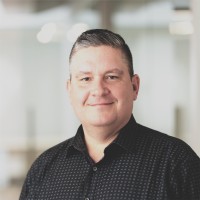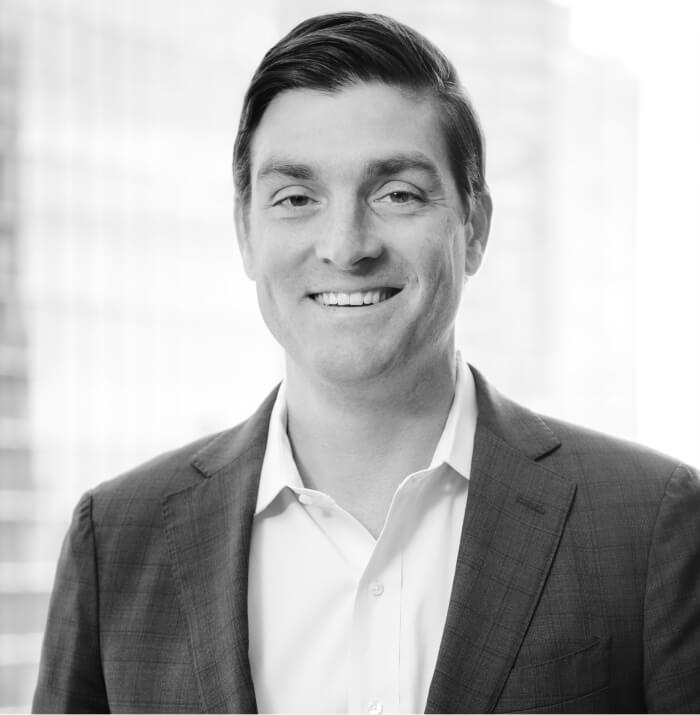 Everywhere we look in the telecom and internet infrastructure space we see preparations for 5G underway. But in many cases, the technological hurdles aren’t the difficult ones. In markets like New York City it’s easier to talk about network densification but a whole lot harder to actually do it. Places like NYC have long been minefields for large carriers, but opportunity zones for smaller companies with the necessary local knowledge and capabilities. One such operator in NYC is Skywire Networks, which has been busy deploying its network throughout the digital deserts of NYC. With us today to talk about Skywire’s approach to bringing high-speed internet to every corner of NYC is founder and CEO Alan Levy.
Everywhere we look in the telecom and internet infrastructure space we see preparations for 5G underway. But in many cases, the technological hurdles aren’t the difficult ones. In markets like New York City it’s easier to talk about network densification but a whole lot harder to actually do it. Places like NYC have long been minefields for large carriers, but opportunity zones for smaller companies with the necessary local knowledge and capabilities. One such operator in NYC is Skywire Networks, which has been busy deploying its network throughout the digital deserts of NYC. With us today to talk about Skywire’s approach to bringing high-speed internet to every corner of NYC is founder and CEO Alan Levy.
TR: Where does Skywire fit into the infrastructure market place in New York City?
AL: Skywire is a NYC ISP and network builder which is about seven years old. Skywire’s objective from the onset was to build and develop high-speed internet networks serving enterprise customers. We don’t focus in the fiber-rich areas of midtown and downtown Manhattan and instead focus on fiber poor areas of NYC such as the west and east side of Manhattan, Chelsea and the Flatiron district, Brooklyn Queens and the south Bronx. To date, we have lit 850 buildings, primarily commercial, with around 125-150 residential apartment buildings as well.
TR: How can the largest market in the city have such large fiber-poor areas?
AL: First consider why there is so much fiber in midtown and downtown Manhattan. Investments were made in those areas because that’s where the commercial buildings with the Fortune 1000 businesses were located: 5th Avenue, Park Avenue, 6th Avenue, Wall Street, essentially between 34th and 57th streets, etc. Businesses in these areas of Manhattan were and continue to be big consumers of data services. Also, quite often large Class A commercial buildings have four, five or more fiber providers built-in and competing with each other. Building fiber in Manhattan was also made easier because of the underground Empire City Subway system (ECS). Using ECS, a carrier could received permission from the city to pull fiber through public conduits underground and reach a manhole near a building they want to light. By doing this, the distance required to dig the streets is reduced dramatically. But that only works in Manhattan. ECS doesn’t exist at any scale in Brooklyn or Queens. Even elsewhere in Manhattan, in places like the Theatre and Garment districts for example, there was very little commercial business 20-25 years ago so there was hardly any fiber put there. The other problem is that given the smaller size of the buildings and businesses in the outer-boroughs, the ROI is often just not there to support a fiber build, which can get very expensive. There are 5 million people living in Brooklyn and Queens, and generally smaller businesses with smaller telecom spends that did not historically justify the ROI needed against the massive fiber build costs. Believe or not, today many of these buildings are still on old copper networks like Verizon’s DSL or the Cable company’s asymmetrical cable broadband plant. That’s the void in the market that we have been filling.
TR: Is this unique to NYC, or is this something we see in other cities?
AL: Older cities, like Chicago and Boston, do run into the same problem. Most of the building gets done in the central business districts where you find large commercial buildings populated with large companies who have demanded top networks for a long time. In all of these urban markets, few of the class B or single-tenant commercial buildings have any sort of fiber or ISP competition.
TR: So how do we get big bandwidth to these areas? What’s the solution?
AL: There are different types of trenching methods. But there are a lot of old streets and sometimes there are prohibitions against trenching, and even if not it’s still around $300 a foot in a place like NYC . The economics simply don’t work. One way we solve this is to deploy fixed wireless access for the last hop into the building to get back to our fiber core. Today, we have hubs and distribution relays in 50 neighborhoods and communities throughout Manhattan, Brooklyn, Queens and the Bronx. From those connected hub buildings, we use high-capacity, high-quality fixed wireless microwave. We generally can reach up to a mile and a half to connect an end user building to one of our hubs. The time to market is not only much more economical but much faster than what would be required to dig the streets. Eventually, another way to connect more people and buildings in fiber poor areas will be via 5G. The problem with 5G in a city like New York is that 5G requires up to ten times the density in terms of towers or “right of way”, and there are few to any towers in New York City. A second major problem is that as I discussed above, there is limited fiber competition throughout the city required to provide the necessary backhaul for 5G. So having city-wide 5G in NYC is a long way off, as I have said in my own blog posts.
TR: NYC has good 4G coverage though, isn’t that the starting point for 5G?
AL: Actually, for many of the same reasons, there are still pockets of New York City that can’t even accommodate 4G, and certain parts of the Bronx don’t even do 3G too well. The 4G networks have historically used taller buildings than those which are ideal for 5G. A 4G tower in a surburban setting can cover a radius of up 10 to 20 miles. With 5G the distance between two towers is two-thirds of a mile. This of course requires much greater density via small cells. In a very dense city like NYC, in order to achieve network density, the distance between roofs connected to backhaul transport could be less than 1,000 feet.
TR: So what is Skywire’s approach? How do you think we get from here to there?
AL: We have been thinking about this a long time. We have known that fixed wireless microwave will be an important component of fronthaul/backhaul networks in NYC. You simply just can’t have a fiber connection to a tower when neither the towers nor the fiber readily exist. Fortunately with 5G, the push from Centralized RAN (C-RAN) to new Open RAN (O-RAN) standards has pushed the mobile industry to a standard called E-CPRI, which is an evolution of CPRI. Instead of having cellular remote radios interface with dark fiber only like in a legacy CRAN environment, with 5G and E-CPRI, the carriers can use high quality ethernet transport, like Skywire’s hybrid fixed wireless/fiber network to connect their fronthaul and backhaul networks. Dish is already actually on the record and aggressively building an O-RAN/E-CPRI based network. Intel is also working on O-RAN initiatives. It’s complementary to the legacy cellular networks which solely rely on dark fiber connections, and you can’t fill the gaps without it. In a city like New York, in order for 5G to be successfully rolled out, we believe that towers and fiber must be complemented by roofs connected via a fixed wireless edge.
TR: Until now Skywire has focused on the enterprise market, so would the mobile infrastructure business be a new direction?
AL: Yes, for sure. I foresee three legs to our business. One is our existing focus on the enterprise including medium to large sized businesses, hospitals, tech companies, financials, etc. and the second being our work with providing great internet to residential apartment buildings. The third would be the mobile piece, which I see as a huge area of emphasis for us in the coming years. New York may be one of the last cities to get it, but 5G is coming! If you look at our network map, you can see the level of density of where we’ve built network outside of midtown and downtown, and particularly in Brooklyn and Queens. For 5G, those areas are critical because that’s where the people live, play and more recently due to Covid, work.
TR: Speaking of bandwidth outside of the office, COVID-19 has certainly shifted that balance toward where people work and learn this past year. How has that affected Skywire and NYC’s infrastructure more broadly?
AL: We’ve been busy on our residential side as well as building to schools, as schools have effectively become broadcast television studios for teachers during remote learning periods. People working and learning remotely also required us to increase the capacity needed on the residential side of our business. We have also been able to move quickly to connect critical health facilities like the abandoned Brooklyn warehouse that New York City turned into a temporary morgue in April. Specific to residential, there is an ongoing massive problem for the wealthiest city in the world in that about 29% of residents of New York City today have either no home broadband or no cellular broadband. Remote working only works if you can actually work remotely and access the internet but what if you don’t have reliable internet? When you talk about remote learning, we have heard about kids studying sitting in a car outside of a McDonald’s because McDonald’s has Wi-Fi. This is the state of affairs that we have in the city today and a problem we’d like to address. Enabling adequate, affordable high-speed broadband solutions to those parts of New York City that are low income and disenfranchised is a big problem that New York City is going to have to someday solve.
TR: Technologically, the solution is trivial. But who will pay for it?
AL: Any commercial enterprise is going to look at their ROI model. When the end-users are paying $30-$40 a month, it’s just not feasible for a carrier to build fiber to reach deep into the boroughs. A fixed wireless edge solution is far more cost-efficient and the ROI might make sense, but it needs to be financeable. I think it has become financeable because once we build out to these areas in New York City, the same infrastructure can be used for 5G and broadband. By building the network into the disenfranchised parts of the city, the hubs that we’ve established allow us to serve all three legs of our business: business, residential and mobile. But to address this issue at full scale for the millions of people in NYC that are not getting good access to the internet today, it’s clearly going to need much more investment by public and private partnerships.
TR: But you also have to scale capacity as well as geographic distribution. Can fixed wireless handle the scaling needs the way dark fiber can?
AL: Yes. The beauty of 5G and E-CPRI is that it is ethernet based and fiber-class ethernet is our current and go-forward architecture. We operate the same 10 gig edge capacity on both fixed wireless and fiber today and have 30 gig radios in the lab. At our serving sites, we can stack gear for higher capacities, and we expect that we will continue to see increasing speeds at lower cost points as time moves on. Of course, if one already has it in place, dark fiber is a very efficient network transmission choice. But if you don’t have it, how do you get it? In cities like Brooklyn and Queens, you have to spend billions to dig up the streets. So, we’re very confident in the evolution of fixed-wireless microwave as a very efficient choice for ethernet edge.
TR: At what stage are we in the rollout of 5G now? Will it ever get to places like Brooklyn?
AL: I saw Verizon was running an ad saying they have 5G available in 2,000 cities. Well in the US, there are 20,000 cities and if you look at the population density of those cities that have 5G in some form, I believe that less than 1% of the population has been covered with 5G. Not much, so it’s still early days. In NYC, the mobile carriers are still mostly filling in gaps in their 4G networks. But with the public auctions for 5G spectrum happening now, we expect the carriers to begin working on getting return on their massive investments and we have the platform built to help them get their 5G services to market quickly.
TR: Thank you for talking with Telecom Ramblings!
If you haven't already, please take our Reader Survey! Just 3 questions to help us better understand who is reading Telecom Ramblings so we can serve you better!
Categories: Industry Spotlight · Metro fiber · Wireless






Discuss this Post